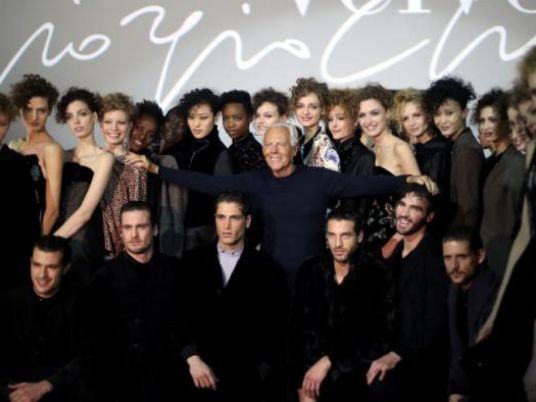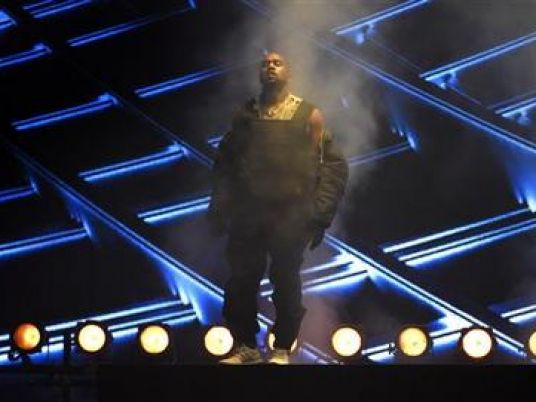As a child, Salvador Dali would often walk through the street carrying a bell, which he would furiously ring whenever he felt people were not paying enough attention to him. According to the artist, “the thought of not being recognized was unbearable.” It is that same rabid hunger for attention that best sums up the recent fashion show at the Darb 1718 art gallery, which boasted a parade of designs allegedly inspired by the work of the renowned surrealist, as well as several other Spanish artists.
Showcasing the works of 16 young designers, the show’s premise—fashion made out of recycled materials—unfortunately failed to make the most of its potential, instead resulting in a seemingly endless procession of increasingly absurd outfits. The idea of making fashion out of recycled materials may be a practical one, but the designs themselves were anything but. And while the inspiration may have come from the likes of Velasquez, Picasso, and Gaudi, the majority of the final products were more along the lines of Lady Gaga by way of Oscar the Grouch.
Organized in part by the Spanish embassy, the show was the culmination of a series of workshops that took place over two months. Out of the hundreds of aspiring designers who applied for the workshop, a mere 14 were accepted and granted the opportunity to learn, among other things, the basics of fashion photography, as well as fashion makeup under the tutelage of a Giorgio Armani makeup artist. Throughout the process, the designers also studied the works of several prominent Spanish artists, such as Joan Miro, Antonio Saura, Francesco de Goya, as well as those mentioned above.
The young designers also put considerable effort into attempting to incorporate recycled material—and in some cases, trash—into their creations, to varying degrees of success. CD earrings might not be such a bad idea, but trash-bag capes should only be worn by five-year olds whose parents either can’t afford any better, or simply don’t care. And while this reporter openly admits to having no fashion sense whatsoever, it doesn’t take a trained eye to realize that the painted toiletpaper rolls glued to store-bought skirts and pants aren’t exactly the trendiest things in the world. In fact, in terms of top ten outfits most commonly seen at mental institutions, they probably rank right below toilet-paper-roll hats, also prominently featured in Saturday’s show. Meanwhile, videotape can be effectively used for ribbons, but some other “materials,” such as pistachio shells, probably shouldn’t have been taken out of the trash in the first place.
“We used everything we could lay our hands on and made it into a fashionable, wearable item,” says Perihan Abou Zeid who, along with Hanaa Badr, created several designs inspired by the works of Salvador Dali. “Like egg trays to make a belt, and a mosquito net for a skirt.
Despite drawing her inspiration from his imagery, Abou Zeid claims to never have had a particular fondness for Dali’s work. “[It] was quite a challenging choice for me,” she admits. “To be completely honest, I wasn’t a huge fan of his work, but the more I studied and looked deeply at his complex compositions and his silhouettes, the more I started to see interesting details.”
Ultimately, Abou Zeid believes that both she and Badr managed to “capture Dali’s spirit” with their designs. “From the elongated silhouettes, which were reflected in the high waist cuts, to small details such as lips, butterflies, round shapes, and clouds.”
Being the first of its kind held at Darb 1718, the show suffered from inevitable technical glitches, like a stubborn DVD player and occasional power shortages; setbacks which would have caused less-confident models to panic or stumble. However, the 12 amateurs burdened with parading the, in many cases, uncomfortable-looking costumes—some of the designs can really only be called that—carried out their performance with commendable self-assurance and a convincing coolness, even if that sometimes meant strutting in the dark.
Overall, the show was by no means a disaster, even though a good deal of the designs seemed like they belonged in a carnival or high school production. The general festive spirit of the event went a long way toward making up for, if not fully redeeming, its many faults. At the end of the show, two of the models released a bundle of balloons into the air. While it was dramatic, it seemed like a bit of a waste. The material probably could have been used for swimwear.
FashionLife & Style


